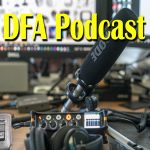We got the next tranche of monthly inflation data from the ABS today, which showed that the Consumer Price Index indicator edged down to 2.4%, which is below economists’ estimate of 2.5%. The headline figure has now been inside the RBA’s 2-3% band for seven straight months.
One important point of distinction with the monthly Indicator is that, while it will include prices for all the items in the CPI basket, not all these prices will be updated each month, so there are large helping of fudge in the numbers, which is why the RBA tends to value the quarterly data more.
That said, even the trimmed mean measure, which smooths out volatile items such as food and energy and is the focus of the RBA’s attention, played ball, decelerating to 2.7% in February from 2.8% in the prior month. The monthly inflation figures are volatile and are unlikely to affect the outlook for interest rates.
The outcome was the equal-lowest rate of underlying inflation since December 2021 and was consistent with the Reserve Bank of Australia’s view that inflationary pressures had cooled considerably over the past year.
The slowdown was driven by a cooling of housing inflation, including rents and power prices, and a decline in fuel costs, the ABS said.
So what is ahead? Well of course we will get the more complete quarterly data in a month’s time, which the RBA is more likely to consider in their rate decision making. But while headline inflation fell to 2.4 per cent last month, it is expected to increase this year as state government electricity bill subsidies expire, even though the federal government has extended the support for power bills another 6 month, and as a result of this use of tax payer funds, the ABS recently revised down the weighting given to power bills in their inflation calculation, which just shows what $9 billion of your money can do!
All this means it is unlikely we will see an April Fool’s Day surprise next Tuesday.
http://www.martinnorth.com/
Details of our one to one service are here: https://digitalfinanceanalytics.com/blog/dfa-one-to-one/
Go to the Walk The World Universe at https://walktheworld.com.au/

